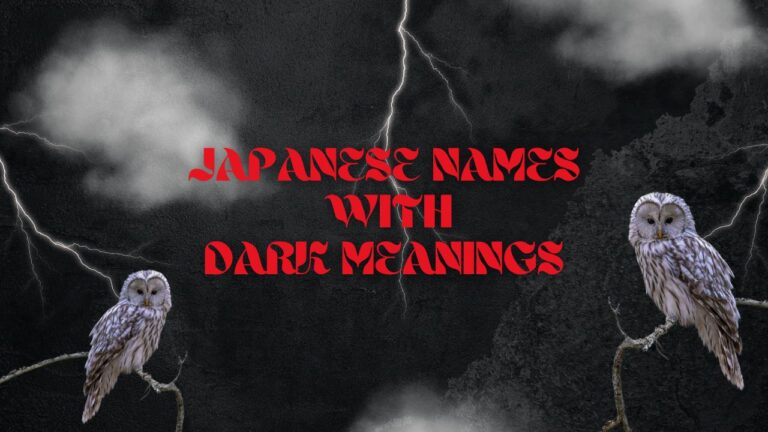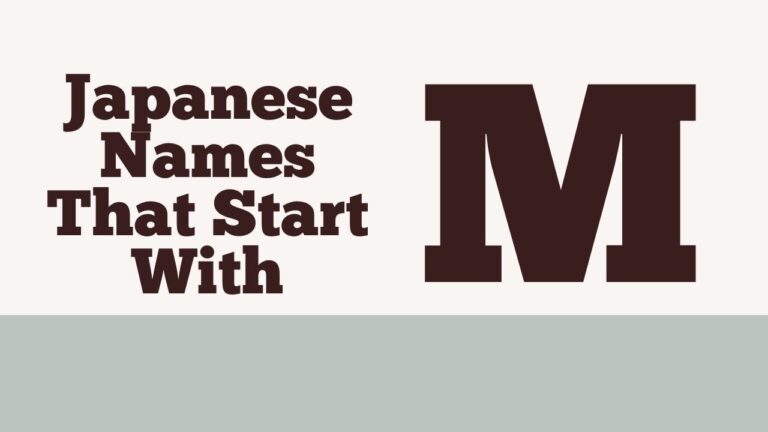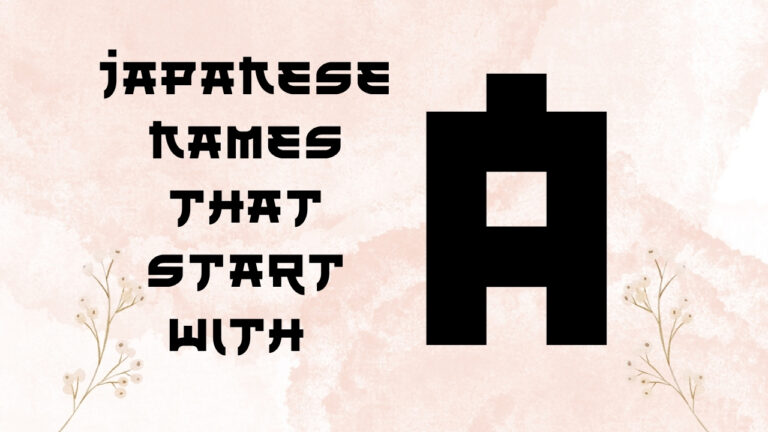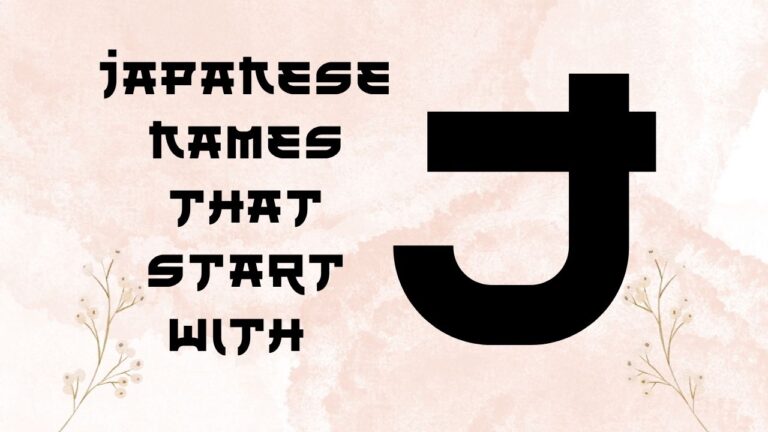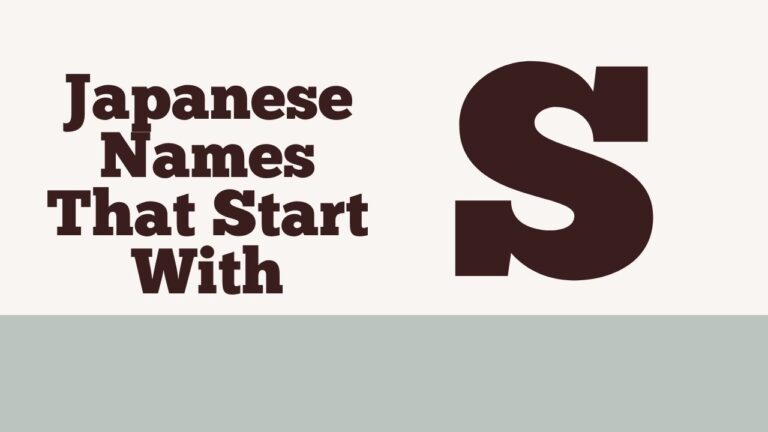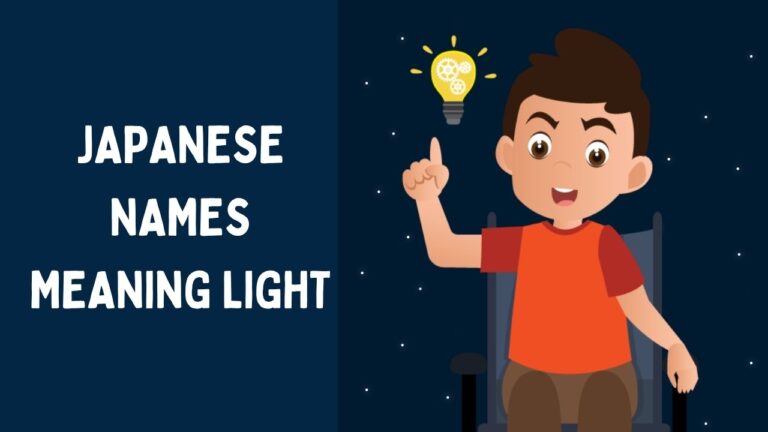100+ Japanese Demon Names: Oni, Yokai & Evil Spirits
Japan’s rich folklore is filled with eerie tales of supernatural beings known as yōkai and oni , often feared and admired for their mysterious powers. These Japanese demons have long been part of the country’s culture, appearing in ancient legends, festivals, and even modern anime.
In this article, we explore a fascinating list of Japanese demon names, including both male and girl names, each carrying deep cultural roots. You’ll also discover Japanese demon names and meanings that reveal the dark, symbolic stories behind them.
Whether you’re drawn to mythology, fantasy writing, or just curious about these spirits, this guide offers a simple yet powerful glimpse into the world of Japan’s most intriguing supernatural entities.
Also Read:Rare Japanese Last Names: 150+ Unique and Historical Names
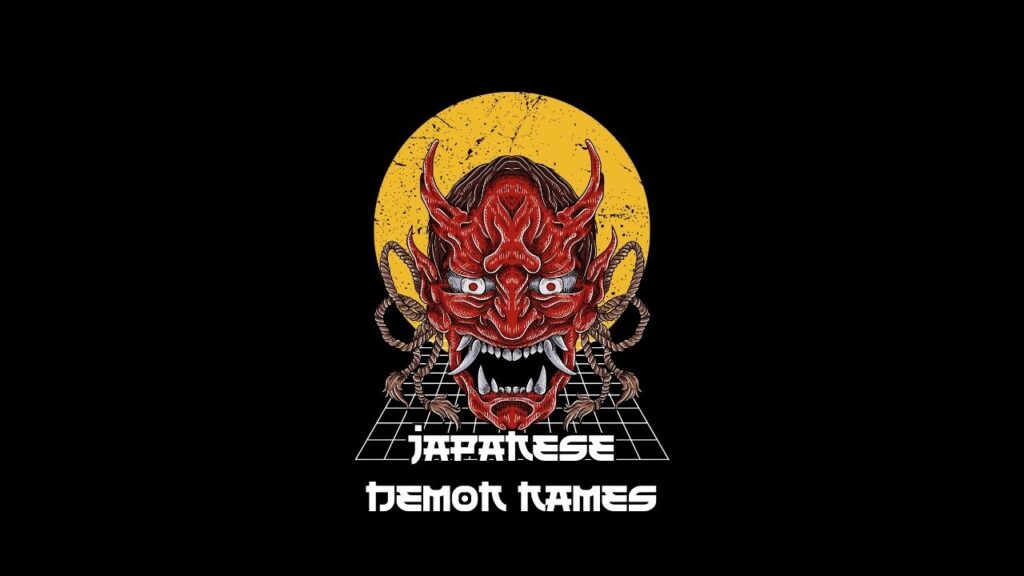
Japanese demon names male
1. 鬼 (Oni)
A general term for demons or ogres in Japanese folklore. Oni are often depicted as large, horned, and fearsome.
2. 酒呑童子 (Shuten-dōji)
One of the most famous demons in Japanese legends, known for kidnapping women and drinking heavily. Slain by the hero Minamoto no Yorimitsu.
3. 茨木童子 (Ibaraki-dōji)
A powerful oni who served Shuten-dōji. Known for a battle at Rashomon Gate and for having their arm severed by Watanabe no Tsuna.
4. 鉄鼠 (Tesso)
A rat demon born from the spirit of a disgraced monk. Said to have attacked temples out of vengeance.
5. 平将門 (Taira no Masakado)
Although originally human, his spirit became a vengeful demon after death. Worshipped and feared in Tokyo.
6. 土蜘蛛 (Tsuchigumo)
A mythical earth spider yokai, often portrayed as an enemy of imperial forces in folklore.
7. 鵺 (Nue)
A chimera-like demon with the head of a monkey, body of a raccoon dog, limbs of a tiger, and snake tail. Brings illness and misfortune.
8. 百目 (Hyakume)
A demon covered in countless eyes, said to guard sacred places and punish intruders.
9. 般若 (Hannya)
Though often female in mask form, some male spirits also turn into Hannya—demonic beings born of jealousy and rage.
10. 牛鬼 (Gyūki)
A sea monster with the body of a spider and the head of a bull. Known for being aggressive and deadly.
11. 天狗 (Tengu)
Once considered demons, these bird-like beings later became protectors. Some are still viewed as mischievous and dangerous.
12. 羅刹 (Rasetsu)
Fiendish spirits from Buddhist lore, often male, known for devouring humans and resisting spiritual teachings.
13. 夜叉 (Yasha)
Malevolent yet sometimes protective spirits that appear in Hindu and Buddhist mythology. Powerful warriors.
14. 朱雀天狗 (Suzaku Tengu)
A specific class of tengu associated with fire and the south. Often linked with destruction and transformation.
15. 影鰐 (Kagewani)
A shadowy crocodile-like demon that attacks by hiding in dark places and ambushing its prey.
16. 鎌鼬 (Kamaitachi)
Wind weasel demons that cut people with invisible blades, often striking in groups of three.
17. 魍魎 (Mōryō)
Spirits or demons that haunt forests, mountains, and graveyards. Malevolent and known to manipulate the living.
18. 牛頭 (Gozu)
Ox-headed demon from Buddhist hell. One of the guardians and punishers of the underworld.
19. 飛縁魔 (Hi-Enma)
A seductive male demon who deceives and drains energy from women in the guise of a lover.
20. 陰摩羅鬼 (Onmoraki)
A bird-like demon that emerges from the corpses of those not given proper funerals.
21. 猛鬼 (Mōki)
A general term for violent or savage demons known for their unrelenting rage and strength.
22. 魑魅 (Chimi)
Mountain spirits or demons, sometimes male, that cause illness and confusion in travelers.
23. 疫病神 (Ekibyōgami)
Gods or demons of plague. Male versions spread sickness and require rituals to be appeased.
24. 怨霊 (Onryō)
Malevolent vengeful spirits, often male, who return to harm the living due to unresolved hatred or injustice.
25. 餓鬼 (Gaki)
Starving demons from Buddhist cosmology, driven by endless hunger and thirst. Once human, now cursed.
Japanese demon names female
1. 鬼女 (Kijo)
A general term for female oni. Often former human women turned into demons by grief, betrayal, or rage.
2. 橋姫 (Hashihime)
A woman consumed by jealousy who transformed into a vengeful demon haunting bridges.
3. 雪女 (Yuki-onna)
The snow woman. A beautiful spirit who lures men in snowy regions and freezes them to death.
4. 蛇女 (Hebi-onna)
Snake woman. A seductress who transforms into a giant snake, often after heartbreak or betrayal.
5. 鬼婆 (Onibaba)
A demonic old woman, often living in the mountains, who eats lost travelers and children.
6. 山姥 (Yamauba)
A mountain witch or hag. Sometimes helpful but often terrifying, she has supernatural powers and a cannibalistic side.
7. 黒髪女 (Kurokami-onna)
“Black-haired woman” spirit who appears with long, wet hair and brings misfortune or death.
8. 逢魔女 (Omajo)
A witch-like spirit seen at twilight (the hour of meeting evil), said to tempt and mislead travelers.
9. 狐女 (Kitsune-onna)
A fox spirit in female form. Known for their beauty, charm, and trickery—can either bless or curse humans.
10. 柳女 (Yanagi-onna)
A willow spirit, often linked to sorrow and heartbreak, appearing as a weeping woman near trees or rivers.
11. 姫鬼 (Hime-oni)
A princess-turned-demon, typically after betrayal or murder, seeking revenge with elegance and wrath.
12. 鏡女 (Kagami-onna)
A spirit that emerges from mirrors, reflecting one’s hidden fears or guilt, sometimes attacking at night.
13. 海女幽霊 (Ama-Yūrei)
Ghosts of female divers who died at sea. Appear dripping wet and drag others underwater.
14. 傘化け女 (Karakasa-onna)
A rare female version of the umbrella ghost, known for haunting rainy streets with one eye and a long tongue.
15. 絡新婦 (Jorōgumo)
A spider demon who appears as a beautiful woman to trap men and devour them.
16. 火車女 (Kasha-onna)
A female variation of the fire cart demon who steals corpses and drags them to the underworld.
17. 婆娑羅女 (Basara-onna)
An eccentric demon woman known for madness, wild behavior, and violent beauty.
18. 鳴女 (Naku-onna)
A weeping spirit, constantly crying due to grief or loss. Her cries can cause madness or despair.
19. 水子霊 (Mizuko-rei)
The ghost of an aborted or stillborn child, often appearing with a sorrowful motherly spirit.
20. お菊の霊 (Okiku no Rei)
The ghost of Okiku, a servant falsely accused of losing plates, who returns nightly to count them and shriek in sorrow.
21. 血塗女 (Chinuri-onna)
“Blood-stained woman”—a ghostly, cursed figure appearing after violent deaths or childbirth.
22. 濡女 (Nure-onna)
A wet-haired woman with serpent-like features, usually found near water, luring and attacking victims.
23. 怨女 (Onna-onryō)
A deeply vengeful female spirit, often wronged in love or life, known for terrifying hauntings.
24. 鈴女 (Suzu-onna)
A spirit that appears with the sound of bells, warning of death or disaster. Her beauty hides a demonic intent.
25. 玉藻前 (Tamamo-no-Mae)
A legendary beautiful court lady who was actually a nine-tailed fox demon causing death and deception at the imperial court.
Japanese demon names unisex
1. 天逆毎 (Amanozako)
A chaotic and rebellious god-demon who defies both heaven and humans. Gender is ambiguous and fluid in many stories.
2. 小豆洗い (Azuki-arai)
A yokai who washes red beans near rivers. Though it appears genderless or gender-fluid, it frightens people with its eerie singing.
3. 濡れ女 (Nure-onna)
A mysterious snake-like water demon with shifting gender roles across regions. Sometimes appears neutral or neither male nor female.
4. 唐傘小僧 (Karakasa-Kozō)
An umbrella ghost with one eye and a long tongue. Although often portrayed as childlike, it can be seen as male, female, or genderless.
5. 鵺火 (Nue-bi)
A supernatural fire associated with the chimera-like Nue. The spirit form (fire or mist) has no gender identity but is seen as ominous.
6. 魂 (Tamashii)
Spirit or soul. In ghostly form, it may represent any person regardless of gender, and becomes a haunting entity when disturbed.
7. 舞首 (Maikubi)
Floating, dancing heads that appear during battlefields or executions. Not gendered but terrifying.
8. 見越入道 (Mikoshi-nyūdō)
A towering yokai that grows taller when looked at. Has ambiguous gender traits and speaks in riddles.
9. のっぺらぼう (Nopperabō)
Faceless ghosts that appear in many forms and genders, often tricking humans by pretending to be someone familiar.
10. 狢 (Mujina)
Shapeshifting badger-like yokai. Often genderless or able to assume any gender as it deceives people.
11. 火間虫入道 (Hima Mushi Nyūdō)
A priest-like fire demon with bug-like features. Its appearance and voice shift across regions and genders.
12. 一反木綿 (Ittan-Momen)
A flying cloth spirit that suffocates victims. Its simple form is not associated with a specific gender.
13. 古椿 (Furubokko)
A spirit of an old camellia tree that curses or haunts passersby. Often portrayed in neutral or undefined gender.
14. 百々目鬼 (Dodomeki)
A cursed being covered in eyes for stealing money. Originally female in some tales, but also appears genderless in others.
15. 影女 (Kage-onna)
A shadowy presence that mimics people. Though often called “onna” (woman), it’s portrayed as unisex in many accounts.
16. 天火 (Tenbi)
A floating fireball spirit sometimes mistaken for will-o’-the-wisp. No gender identity, just deadly and mysterious.
17. 夜行さん (Yagyō-san)
A spirit that travels at night and curses those who block its path. Its form is anonymous and eerie.
18. 丑の刻参り霊 (Ushi no Koku Mairi Rei)
Spirits born of vengeance rituals done at midnight. While the ritual is often female-led, the spirits themselves are unisex.
19. 化け猫 (Bakeneko)
A shapeshifting demon cat. While it takes on human forms of different genders, its origin is animalistic and unsexed.
20. 雲外鏡 (Ungai-kyō)
A possessed mirror spirit. It reflects one’s true self and has no set gender, often manifesting based on the viewer’s fears.
21. 天火狐 (Tenbi-ko)
A spirit fox born from fire or lightning. It appears in both male and female forms or even as a glowing flame.
22. 魂振 (Tamafuri)
A ghostly phenomenon causing spiritual possession. Considered formless and unbound by gender.
23. 音無鬼 (Otonashi-oni)
The “silent demon.” Appears only when there’s no sound. Has no defined gender, known for its eerie stillness.
24. 土転び (Tsuchikorobi)
A soil-dwelling yokai that tumbles toward travelers, genderless and childlike in nature.
25. 虚無僧霊 (Komusō-rei)
The spirit of a wandering monk wearing a basket hat. Though originally male, its ghostly form is now seen as anonymous and without identity.
popular Japanese demon names
1. 玉藻前 (Tamamo-no-Mae)
A legendary nine-tailed fox demon who disguised herself as a beautiful woman and brought ruin to the imperial court.
2. 九尾の狐 (Kyūbi no Kitsune)
The Nine-Tailed Fox. A powerful and ancient yokai known for its cunning and magical abilities. Popular in both folklore and anime.
3. 鬼灯 (Hoozuki)
A demon bureaucrat from the underworld in modern pop culture, especially in Hōzuki no Reitetsu. Not traditional but very popular.
4. 百鬼丸 (Hyakkimaru)
A demon-hunted warrior from Dororo, born missing 48 body parts due to a demonic pact. Not a demon himself, but deeply linked to demons.
5. 獄卒 (Gokusotsu)
Demonic guards of hell. They’re popular in Buddhist stories as well as games and anime.
6. 魔羅 (Mara)
A demon from Buddhist belief who tempts people away from enlightenment. Also seen in Japanese versions of Buddhist texts.
7. 憑依霊 (Hyōirei)
Possession spirits that take over human hosts. Common in both traditional beliefs and horror fiction.
8. 闇女 (Yami-onna)
“Dark Woman” yokai often featured in urban legends and ghost stories. A spirit who drags people into darkness.
9. 餓鬼魂 (Gakitama)
A soul of a Gaki (hungry ghost), tormented by unquenchable hunger. Common in Buddhist hell stories and supernatural media.
10. 夜見 (Yomi)
A term related to the underworld in Japanese mythology. Sometimes personified as a dark, demonic entity.
11. 魔神 (Majin)
Literally “demon god,” a general term for demonic deities in Japanese pop culture and manga/anime.
12. 羅刹女 (Rasetsu-onna)
A female Rasetsu (Rakshasa), fierce demons in Buddhist lore, often portrayed with seductive yet deadly power.
13. 獄炎鬼 (Gokuenki)
“Hellfire Demon,” often used in games and manga to refer to high-level fire-based demons.
14. 魔狼 (Marō)
“Demon wolf” spirit featured in various horror and fantasy series. Often associated with curses and savage instincts.
15. 怨鬼 (Onki)
A spirit or demon born from deep resentment. Often appears in cursed families or haunted places in folklore.
16. 冥鬼 (Meiki)
“Underworld demon,” a common term used in anime and video games to describe death-related spirits.
17. 紅鬼 (Kurenai-oni)
“Red Demon.” Appears often as a character or symbol in folklore festivals like Setsubun and in media.
18. 青鬼 (Ao-oni)
“Blue Demon.” Famous from folk tales, festivals, and the Ao Oni horror game series.
19. 火鬼 (Hi-oni)
A fire-wielding demon popular in games and manga, representing destruction and chaos.
20. 魍魎鬼 (Mōryōki)
A combination of mountain and forest demons, used in fantasy series to describe primal, wild spirits.
21. 地獄童子 (Jigoku Dōji)
“Child of Hell,” a character trope in Japanese stories where a demonic child brings doom or chaos.
22. 烏天狗 (Karasu-Tengu)
Crow tengu, often considered a darker, more warlike class of tengu. Popular in martial arts and yokai legends.
23. 血鬼 (Chikki)
“Blood Demon.” A term found in horror manga/anime (Kimetsu no Yaiba features “Blood Demon Arts”).
24. 霊鬼 (Reiki)
“Spirit Demon,” a hybrid ghost-demon creature seen in many spiritual or horror-themed narratives.
25. 鬼丸 (Onimaru)
A demon-related sword or character name found in historical tales, representing demonic power sealed in a weapon.
evil Japanese demon names
1. 黒鬼 (Kuro-oni)
“Black Demon.” Represents pure evil and darkness. Often linked with death and corruption in Setsubun rituals and dark folklore.
2. 怨念鬼 (Onnen-oni)
A demon born from intense grudges and hatred. It manifests after years of unresolved pain and seeks vengeance through violence.
3. 獄王鬼 (Gokuōki)
“Hell King Demon.” A high-ranking demon who rules over tortures in the Buddhist underworld. Ruthless and unforgiving.
4. 血塗れ鬼 (Chimure-oni)
“Blood-soaked Demon.” Covered in the blood of its victims, this oni appears in many haunted legends and ghost tales.
5. 焼亡鬼 (Shōbōki)
“Burning Death Demon.” A fire demon said to come from the souls of arsonists and pyromaniacs who died in their own flames.
6. 腐食鬼 (Fushokuki)
“Rotting Demon.” Spreads decay and disease. It feeds on corpses and is often found haunting cemeteries.
7. 無間鬼 (Mugenki)
A demon that resides in the lowest hell (Avīci), where sinners suffer eternally. Known for its merciless torment.
8. 夜啼鬼 (Yataki)
“Night Howling Demon.” Wanders at night, screaming in agony and driving humans to madness through its cries.
9. 眼喰鬼 (Mekuriki)
“Eye-Eating Demon.” Feeds on human eyes and is blind itself, guided by sound and smell.
10. 狂鬼 (Kyōki)
“Mad Demon.” Possesses people and drives them insane with violent thoughts. Common in cursed object stories.
11. 黒炎鬼 (Kokuenki)
“Black Flame Demon.” Cloaked in cursed fire, it incinerates anything it touches, including spirits.
12. 殺童鬼 (Satsudōki)
“Child-Slayer Demon.” A terrifying entity feared in rural legends, said to target children as an offering for more power.
13. 呪縛鬼 (Jubakuki)
A binding demon that traps souls with cursed ropes or seals, preventing them from moving on.
14. 虐鬼 (Gyakuki)
“Torture Demon.” Known for inflicting slow, painful suffering on the living and the dead alike.
15. 冤魂鬼 (Enkonki)
A demon created from wrongly accused spirits who return with hatred and seek to destroy those who harmed them.
16. 地獄耳鬼 (Jigokumimi-oni)
“Hell-Eared Demon.” Can hear even the faintest curses or whispers and hunts those who speak ill of others.
17. 災禍鬼 (Saika-oni)
“Calamity Demon.” Brings disasters like earthquakes, plagues, or famine wherever it passes.
18. 首狩鬼 (Kubikaki-oni)
“Head-Hunting Demon.” Roams at night searching for human heads as trophies. Often appears headless itself.
19. 笑鬼 (Warai-oni)
“Laughing Demon.” Constantly giggles while inflicting suffering. Its laughter is said to curse anyone who hears it.
20. 絶望鬼 (Zetsubōki)
“Despair Demon.” Feeds on hopelessness and depression, growing stronger with each broken soul.
21. 鬼毒 (Kidoku)
“Poison Demon.” Its breath and touch are toxic. Feared for spreading spiritual decay and hallucinations.
22. 亡者喰い (Mōjakui)
“Devourer of the Dead.” Eats wandering souls that haven’t crossed over, becoming more demonic with each one consumed.
23. 悪霊王 (Akuryō-ō)
“King of Evil Spirits.” A legendary demonic figure who commands legions of cursed ghosts.
24. 生首鬼 (Namakubi-oni)
“Severed Head Demon.” Takes the form of a flying, cursed head seeking vengeance against those who wronged it in life.
25. 虚鬼 (Uroki)
“Void Demon.” A soulless being made from nothingness. It consumes emotions and memories, leaving victims hollow.
Japanese demon names from anime
1. 鬼舞辻 無惨 (Kibutsuji Muzan)
From Demon Slayer (鬼滅の刃) – The main antagonist, Muzan is the first and most powerful demon, capable of creating others.
2. 冨岡 義勇 (Tomioka Giyū)
Also from Demon Slayer. While not a demon, he is deeply associated with demon lore as a Hashira fighting against them.
3. 堕姫 (Daki)
From Demon Slayer. A seductive and deadly Upper Moon demon who kills humans while hiding behind her beauty.
4. 魘夢 (Enmu)
From Demon Slayer: Mugen Train. A demon who manipulates dreams to trap and kill his victims.
5. 奈落 (Naraku)
From Inuyasha (犬夜叉) – A half-demon who manipulates others, spreads curses, and serves as the main antagonist.
6. 神無 (Kanna)
From Inuyasha. A void demon who serves Naraku. She has no emotions and uses a mirror to steal souls.
7. 鬼灯 (Hōzuki)
From Hōzuki no Reitetsu (鬼灯の冷徹) – The demon deputy of hell, calm and cruelly efficient in torturing sinners.
8. 雷禅 (Raizen)
From Yu Yu Hakusho (幽☆遊☆白書) – One of the Three Kings of the Demon World and Yusuke’s demon ancestor.
9. 蔵馬 (Kurama)
From Yu Yu Hakusho – A fox demon reborn as a human. Intelligent and deadly with plants.
10. 戸愚呂弟 (Toguro Otōto)
From Yu Yu Hakusho. A demon-turned-human antagonist who increases his power by manipulating his muscle mass.
11. アカザ (Akaza)
From Demon Slayer. A powerful Upper Moon demon who loves fighting strong opponents and despises weakness.
12. 妓夫太郎 (Gyutaro)
From Demon Slayer. The true body behind Daki. Twisted and self-hating, he wields blood-sickle attacks.
13. 吾峠 (Goutouge)
While not a demon, this is the surname of Demon Slayer’s creator and sometimes used as a tribute name for OC demons in fan works.
14. 阿修羅 (Asura)
From Soul Eater (ソウルイーター) – The first Kishin (god of madness), feared for spreading insanity and chaos.
15. クロ (Kuro)
From Blue Exorcist (青の祓魔師) – A cat sōbi (familiar) who once destroyed villages when enraged.
16. ルシフェル (Rushiferu / Lucifer)
From The Devil is a Part-Timer! (はたらく魔王さま!) – A fallen angel and demon general turned NEET in the human world.
17. 真奥貞夫 (Maō Sadao)
Also from The Devil is a Part-Timer! – Satan himself, living in Tokyo and working at a fast-food chain.
18. セバスチャン・ミカエリス (Sebasuchan Mikaerisu)
From Black Butler (黒執事) – A demon butler bound by contract to Ciel Phantomhive.
19. 胡蝶カナエ (Kochō Kanae)
Not a demon herself, but associated with Demon Slayer‘s demon-hunting corps and whose death was caused by a demon.
20. 無鷺 (Muza)
A lesser-known demon character from Nura: Rise of the Yokai Clan (ぬらりひょんの孫).
21. 玉章 (Tamazuki)
From Nura: Rise of the Yokai Clan. A fox demon who uses a demonic blade and seeks to take over the Nura Clan.
22. ぬらりひょん (Nurarihyon)
From Nura: Rise of the Yokai Clan. The leader of the Nura clan, looks old but is immensely powerful.
23. 八雲紫 (Yukari Yakumo)
From Touhou Project (technically a game-turned-anime) – A powerful and enigmatic youkai who controls boundaries.
24. 小夜左文字 (Sayo Samonji)
From Touken Ranbu – A sword personified, haunted by his past. While not a demon, he is often portrayed with dark, demonic energy.
25. アモン (Amon)
From Devilman Crybaby. A mighty demon whose body becomes the vessel for the protagonist, Akira.
conclusion
Japanese demon names reveal a deep and mysterious side of the country’s rich folklore, mythology, and modern storytelling. From ancient spirits to fearsome villains in anime, these demons reflect cultural fears, spiritual beliefs, and creative imagination.
Whether you’re exploring them for curiosity, writing, or inspiration, these names offer a powerful connection to Japan’s supernatural heritage—both dark and fascinating.

